DnD 5e Monk Guide

It has been quite a while since DnD 5e was released. However, Dungeons and Dragons aficionados cannot seem to get enough of it. This is because everytime you think you know everything about the game, the game presents something new in itself for the fans to look forward to. Those seasoned to DnD 5e know that the game has multiple classes to choose from. You can choose a particular class and accordingly build your character in the game going forward.
While the game is primarily dominated by sorcerers and wizards, there are some classes that are quietly working their magic in the background. Yes, these are the monks that we talk about. For those who don’t know, Monks are the masters of controlling their own mind and body. Throughout their journey, these monks tend to draw power from their spiritual enlightenment which also happens to be their guide in the journey.
In this article, we will lay down a detailed DnD 5e Monk guide that will walk you through everything related to a DnD monk 5e, monk 5e subclass, and everything else.
How To Create A Monk In DnD 5e?
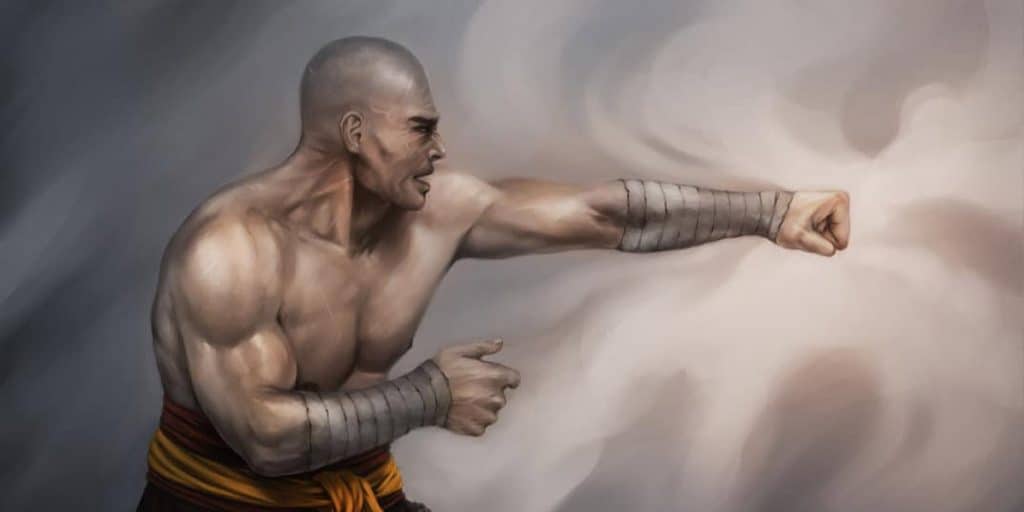
AS we mentioned earlier, monks happen to be one of the wisest classes in the DnD 5e. Their spiritual quest for enlightenment has made them experts at obtaining and implementing knowledge. Also, this spiritual enlightenment happens to be their primary source of power. But if you think a DnD 5e monk is only about spirituality and other religious aspects, you couldn’t be more wrong.
A monk’s spiritual enlightenment is what guides them in understanding the natural world and order of things around them. Similarly, this allows them to access a unique variety of powers. An average DnD Monk 5e happens to be a combination of swift ideas rolled together into one stellar character class. This means a DnD 5e monk is also a good martial artist, pseudo casters, with enough mystical powers.
Creating a monk will need you to reconnect with the monastery where you’ve spent your formative years and have learnt everything you know so far. Here, you can choose to have your own backstory to make your character furthermore interesting.
Did you choose your monk life for yourself or did the life choose you? Once the backstory is done, consider why you left the monastery in the first place. Was it because you were handed a mission way out of Tradition Manoeuvre Your cloister? Or were you cast out of the monastery citing any violation?
These are some of the things you’ll need to consider when creating a monk. Given a lifetime spent in the monastic community, a DnD monk 5e has achieved the ability to harness ki and always be lawful in alignment.
Here are a few suggestions for a quick DnD 5e monk build. You can use these suggestions to create a monk class.
| Level | Proficiency Bonus | Martial Art | Ki Points | Unarmored Movement | Key Features |
|---|---|---|---|---|---|
| 1 | +2 | 1d4 | – | – | Unarmored Defense, Martial Arts |
| 2 | +2 | 1d4 | 2 | +10ft | Ki, Unarmored Movement |
| 3 | +2 | 1d4 | 3 | +10ft | Monastic Tradition, Deflect Missiles |
| 4 | +2 | 1d4 | 4 | +10ft | Ability Score Improvement, Slow Fall |
| 5 | +3 | 1d6 | 5 | +10ft | Extra Attack, Stunning Strike |
| 6 | +3 | 1d6 | 6 | +15ft | Ki-Empowered Strikes, Monastic Tradition |
| 7 | +3 | 1d6 | 7 | +15ft | Evasion, Stillness Of The Mind |
| 8 | +3 | 1d6 | 8 | +15ft | Ability Score Improvement |
| 9 | +4 | 1d6 | 9 | +15ft | Unarmored Movement |
| 10 | +4 | 1d6 | 10 | +20ft | Purity Of Body |
| 11 | +4 | 1d8 | 11 | +20ft | Monastic Tradition |
| 12 | +4 | 1d8 | 12 | +20ft | Ability Score Improvement |
| 13 | +5 | 1d8 | 13 | +20ft | Tongue Of The Sun and Moon |
| 14 | +5 | 1d8 | 14 | +25ft | Diamond Soul |
| 15 | +5 | 1d8 | 15 | +25ft | Timeless Body |
| 16 | +5 | 1d8 | 16 | +25ft | Ability Score Improvement |
| 17 | +6 | 1d10 | 17 | +25ft | Monastic Tradtion |
| 18 | +6 | 1d10 | 18 | +30ft | Empty Body |
| 19 | +6 | 1d10 | 19 | +30ft | Ability Score Improvement |
| 20 | +6 | 1d10 | 20 | +30ft | Perfect Self |
DnD Monk 5e Class Features
| Hit Dice | 1d8 Per Level |
| HP At Level Up | 1d8 or (5) + Constitution Modifier |
| Primary Ability Scores | Dexterity And Wisdom |
| Armour Proficiency | None |
| Weapon Proficiency | Simple Weapons and Shortswords |
| Tool Proficiency | Can Choose any one of artisan’s tools or a musical instrument |
| Saving Throws | Strength, Dexterity |
If you are seasoned to DnD, you know that monks are one of the most unique and interesting classes in the game. While many claim them to be underpowered, playing as a monk is awesome. Monks are great support characters with the ability to easily maneuver through combat.
This means that monks can get out of areas with the heaviest combat with great ease. This makes them a great infiltrator in case your party ever needs one. Note that monks aren’t the strongest classes of them all but they do bring a lot of uniqueness and indispensable playstyle to the table.
Level 1 D&D Monk
At level 1, you can start your character class with the help of the following equipment
- A shortsword or a simple weapon
- A dungeoneer’s pack or an explorer’s pack
- 10 darts
1. Unarmored Defense
At level 1, your monk class will be without armour or a shield whatsoever. But not wearing armour or a shield means your AC equals +10 of your Dexterity and your Wisdom modifier.
2. Martial Arts
At level 1, your character is a master of unarmed combat and monk weapons 5e (shortswords, simple melee weapons). Here are the benefits that come when you are wielding monk weapons or aren’t wearing any armour or shield in combat
- Using A Dexterity save instead of Strength for the attack and for damage rolls during each of your unarmed strike and monk weapons.
- Ability to roll a d4 instead of the normal damage imparted using either an unarmed strike or monk weapons. Note that the die changes as your gain monk levels
- Using the Attack action when performing an unarmed strike or monk weapon attack will turn one unarmed strike into a bonus action
As we mentioned earlier, as a monk, you’ll have to reconnect with the monastery you grew up at and spent your formative years at. Note that each monastery has different monk weapons on offer. For example, some monasteries use a nunchaku or a sickle, straighter blade, or anything else. Whatever monk weapon you choose, ensure that you check the weapon statistics in the Weapons section.
2nd Level Monk
Once your character reaches level 2, your monk gets the ability to harness the energy of Ki. The more ki points you accumulate, the more ki you can access.
1. Ki
Your ki points are dependent on your monk level. You can see this in the Ki Points column on the Monk table. You can spend these Ki points to gain new features or enhance the existing ones. For example, at level 2, you can opt to spend your Ki points for getting access to features such as:
- Flurry of Blows
Upon taking the Attack action, you can spend 1 Ki point to make 2 unarmed strikes.
- Patient Defense
You can spend 1 Ki point to take the Dodge Action as your bonus action.
- Step Of The Wind
You can spend 1 ki point either to Disengage/Dash action as a bonus action on your turn. Upon doing so, the jump distance automatically gets doubled on your turn.
Note that the more levels you gain, the more Ki features you get to access. Every time you spend a Ki point, it will be unavailable until you take a short or a long break. Once you take a short or a long recess, all your expended Ki will draw back into you.
NOTE: After spending one ki point, you need to spend at least 30 minutes meditating for your Ki to replenish.
2. Unarmored Movement
Since you aren’t wielding any armour or wearing a shield, your speed increases by 10 feet once your DnD monk 5e reaches level 2. Note that every time you reach a certain level, your bonus will increase. Check-in with the Monk table to know more about the same
For example, upon reaching level 9, you gain the ability to scale and move along vertical surfaces and walk through liquids on your turn without falling down when moving.
3rd Level Monk
1. Deflect Missiles
As the name suggests, once you reach level 3, your monk will be able to catch missiles or deflect them when fired using a ranged weapon. Upon doing so, the damage received is automatically reduced by 1d10+ your Dexterity modifier + your current monk level. If the damage received is reduced to 0, you are able to catch and hold the missile in your hand if it fits while keeping the other hand idle.
In simple words, you can use 1 ki point to return the missile to your enemy using a ranged weapon. You can make this return attack with proficiency irrespective of your proficiency level. In such a case, the missile counts as a monk weapon for that particular attack. The normal range of this attack is 20ft whereas the longest range is 60 ft
2. Monastic Tradition
Monks are extremely careful about guarding their traditions. To make it official, your monk will commit himself to the monastic tradition upon reaching level 3. The monastic tradition, known as the Way Of The Open Hand, can be learned about more at the monk table. Note that the monastic tradition will grant you additional features at levels 3, 6, 11, and 17
Level 4 DnD Monk 5e
1. Slow Fall
Upon reaching level 4, you can use your reaction to reduce the damage taken during falls by slowing down your fall altogether. Here, your fall damage will be reduced by 5 times your current monk level
2. Ability Score Improvement
This is a recurring feature that you will get at levels 4, 8, 12, 16, and 19. Using this, you will be able to improve the ability score of any ability of your choosing by 2. Alternatively, you can use it to improve the ability scores of two different abilities by 1. Note that you CANNOT increase an ability score over 20 using this feature
5th Level Monk
1. Extra Attack
The Extra Attack lets you attack twice instead of once after your monk reaches level 5. You can use this feature every time you take the Attack action on your turn
2. Stunning Strike
This is one of the most interesting features in the monk class. Using the stunning strike at level allows you to tamper with the flow of Ki in your opponent’s body. When you hit an opponent with any melee weapon, you can use 1 ki point to send in a stunning strike. To protect himself against this strike, the opponent needs to perform a Constitution saving throw or else risk being stunned till his next round
6th Level DnD Monk 5e
1. Unarmored Movement
When your character reaches level 6 and wields any armour or wearing a shield, his speed increases by 15 feet.
2. Ki-Empowered Strike
Now, this is something you’ll like to have in your character’s arsenal. With the Ki-Empowered strike, every unarmed strike counts as a magical strike. In addition, this magical strike grants you added resistance and immunity to non-magical attacks followed by reduced damage.
7th Level Monk
1. Stillness Of Mind
If you are looking for the DnD 5e best monk build, this feature right here is the key to it. With the Stillness Of Mind, you can use an action to end an effect that is causing you to be charmed or frightened.
2. Evasion
The best way to keep maximum health till the very end is by dodging attacks whenever and wherever possible. On reaching level 7, the Evasion feature enhances your instinctive agility helping you dodge out of a few certain effects such as the fireball spell or the dragon’s breath. When you are under an attack that demands you make a Dexterity saving throw to take half-damage, this feature will give you zero damage provided you make a successful throw.
10th Level Monk
1. Purity Of Body
When your monk is at level 10, he has now gained sufficient mastery over the ki over his body. With this feature, the ki flowing through your monk’s body makes him immune to poison and diseases.
2. Unarmored Movement
On reaching level 10, your unarmored speed bonus is increased by 20 feet when you’re not wearing any armour or wielding a shield
13th Level Monk
1. Tongue Of The Sun and Moon
It takes one month to learn a new language. Sadly these rules don’t apply to your monk. With the tongue of the sun and moon, you can touch the ki of other’s minds and learn about all their spoken languages. Moreover, with this feature, any creature can understand a language you understand and say.
14th Level Monk
1. Diamond Soul
At level 14, you have a powerful hold over your Ki. This is where your mastery over the Ki comes into play the most. With the Diamond Soul, you gain added proficiency over all your saving throws. In addition, every time you make a failed saving throw, you can spend 1 ki point to reroll the fail save and attempt it a second time.
15th Level DnD Monk 5e
1. Timeless Body
Just like the purity of the body feature that makes your body immune to poison and diseases. Similarly, upon reaching level 15, the Timeless Body feature sustains your ki so that you don’t suffer from fatalities of old age. This ensures that you no longer need food or water and can’t be aged magically. Note that your character will still DIE of old age.
18th Level Monk
1. Empty Body
Numerous Hollywood movies over the years have fuelled our desire to become invisible. This is a reality if you’re playing as a monk in DnD. Upon reaching level 18, you can use Action and spend 4 ki points to become invisible for 1 minute. In this 1 minute, you will also have added resistance to all damage except force damage.
20th Level Monk
1. Perfect Self
You have become an absolute master when you reach the 20th level. When at level 20, you roll an initiative but have no ki points left, you regain 4 ki points.
Ability Scores Of Monks
Upon breaching every level, you can further enhance the ability score of any ability of your choosing. Dexterity happens to be a monk’s primary ability. However, these monks also need a Constitution and Wisdom function to make it all work. Monks have very little use of strength, intelligence, or charisma so this leaves you with plenty of points to be assigned to the remaining three abilities.
Monks can make good strength saves which reduces their need for Strength. However, expanding this ability will help improve the effectiveness of that proficiency
As we mentioned above, Dexterity is a monk’s primary ability. As a monk, you will be relying heavily on Dexterity when attacking as it helps set up your attack and ultimately decides the amount of damage to impart.
Monks practically do not need Intelligence. Wisdom is needed to fuel many of the monk’s special abilities. It allows the monk to make successful saving throws. Therefore, ensure that you invest a few skill points into Wisdom as your special offensive abilities rely heavily on it
When building the DnD 5e best monk build, here are the recommended ability scores you should opt for
- Strength: 8
- Dexterity: 15
- Constitution: 14
- Intelligence: 10
- Charisma: 8
- Wisdom: 15
Monk Weapons
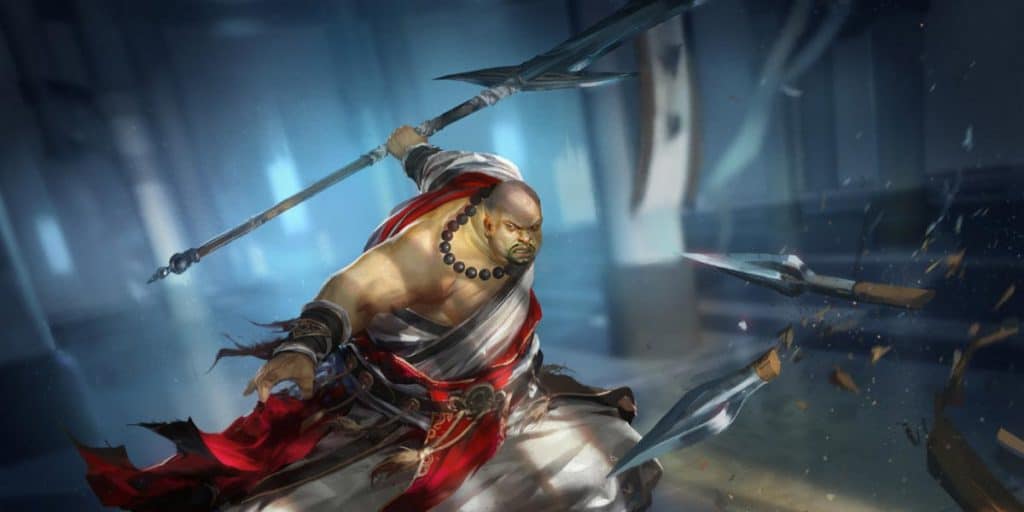
Monks have spent their formative years’ training in both armed and unarmed forms of martial arts combat. All monks base damage on martial arts which makes arming monks a great choice. The best damage you can deal with using a monk weapon is 1d8. Monks use Dexterity with any of their monk weapons So, the only difference between the monk weapons you’ll notice is the range and damage type.
Here are some of the recommended weapons if you are planning for the DnD 5e best monk build.
- Javelin: Doesn’t deal much damage but is highly effective in terms of range
- Handaxe: Can be thrown and is a great source of damage
- Quarterstaff: Allows the monk to match his unarmed damage till level 17. Cannot be thrown and is no match to the spear.
- Short Sword: A great choice for close-quarter combat
- Spear: One of the finest monk weapons in DnD 5e. Deals piercing damage and can be thrown
- Unarmed: Using unarmed strikes allows you to perform those Flurry Of Blows. Your weapon damage will increase your unarmed damage till level 17th.
Monastic Traditions
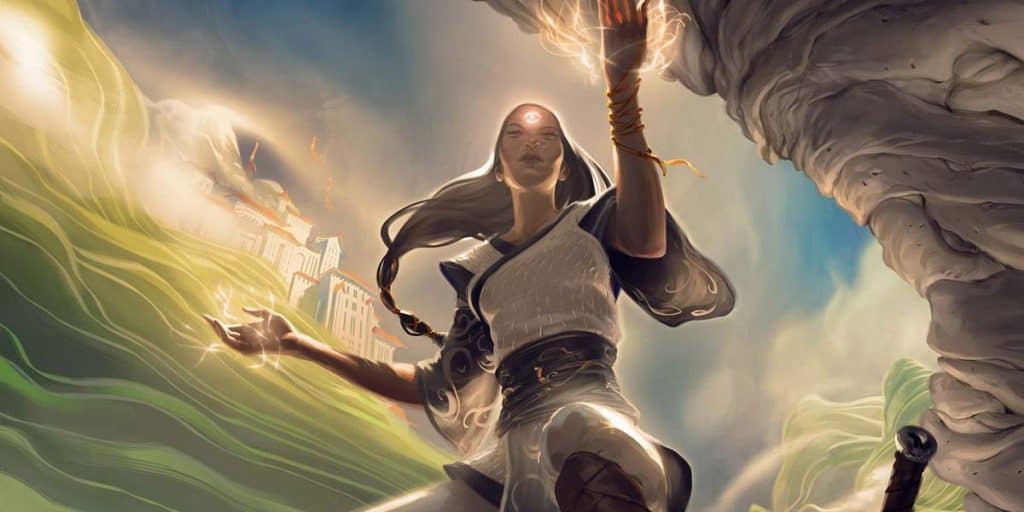
There are multiple monastic traditions scattered across monasteries present in the DnD multiverse. While the majority of the monasteries practice only a single monastic tradition, some of the monasteries honour all three traditions and instruct every monk as per his aptitude and interest.
However, all monastic traditions rely on the same basic techniques and tend to diverge more as the student grows more adept. Hence, if you are playing as a monk in DnD, you will need to choose your monastic tradition when you reach level 3. Here are the different monastic traditions
1. Way Of The Cobalt Soul
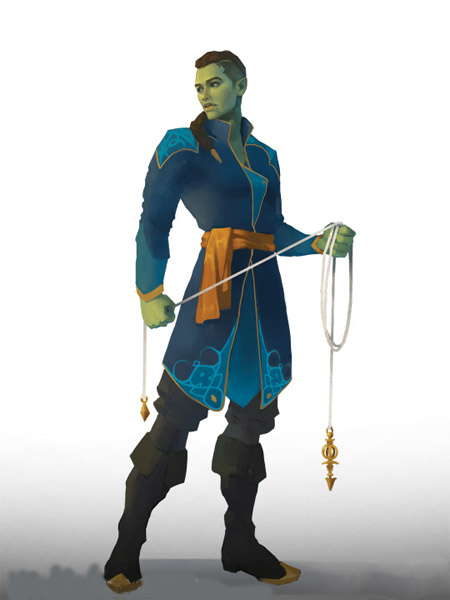
The archives of the Cobalt Soul are one of the well-respected and heavily guarded repositories. Here, you can find tomes, information, and history of everything that spreads across Exandria. At the Way Of The Cobalt Soul, young aspirants go out seeking enlightenment to better understand the world around them. They learn the clarity of truth and strength needed to defend it as they master the techniques to help defend the world around them.
The monks of the Cobalt Soul are based on the sole embodiment of the phrase “know your enemy.” Here, monks train the young ones to predict, research, and prepare against every wave of evil that comes their way. These monks are trained and punctured to manipulate the very spirit of their opponent. With the help of understanding, these monks can uncover their enemy’s deepest secrets and then adapt or surmount them.
I. Extract Aspects
As we mentioned earlier, you’ll need to choose a monastic tradition upon reaching level 3. When you choose this particular tradition, you can strike all the pressure points to extract crucial information from your opponent. This will help you gain insight into your foe’s combat ability along with their potential weaknesses.
Every time you hit a creature using the Flurry Of Blows, you mark them Analysed. Every time an analyse misses an attack against you, you can make an unarmed melee attack against the creature. Here, you can learn about the target’s different attributes such as
- Damage
- Vulnerabilities
- Damage Resistance
- Damage Immunity
- Condition Immunity
II. Extort Truth
Upon reaching level 6, you can hit a cluster of hidden nerves on an animal. Hitting these hidden nerves will cause the creature to temporarily lose control over his senses and become mentally malleable. You can use this opportunity to extract the truth and other bits and pieces of information from the creature. However, ensure that your attack is effective as an affected creature who is aware of the effect will avoid answering questions and respond with a lie.
III. Mystical Erudition
So far, you’ve undergone extensive training at the Cobalt Soul in Exandria. When you reach level 6, you get to learn any one language of your choosing. Also, you gain proficiency in any skills of your choosing such as Arcana, History, Investigation, Nature, and Religion. If you are already proficient in any of the above-mentioned skills, you can use the Mystical Erudition to enhance the proficiency and double the proficiency bonus
As you reach level 17, you get to learn an additional language followed by an additional proficiency over any of the skills mentioned above.
IV. Mind Of Mercury
When you reach level 11, you have honoured your awareness and reflexes through mental aptitude and pattern recognition. Here, you can take one action per turn to spend 1 ki point and gain an additional reaction.
V. Mystical Erudition (Additional)
Upon reaching level 17, this gives you command over an additional language followed by added skill proficiency in any one of the skills mentioned above. If you are already proficient in any of the above-mentioned skills, you can use the Mystical Erudition to enhance the proficiency and double the proficiency bonus
VI. Debilitating Barrage
At level 17, you’ve gained utmost control over your ki, mind, and body. In addition, you have also learned the knowledge using which you can temporarily lower a creature’s fortitude using a series of pressure points. Every time you attack a creature using the Flurry Of Blows, you can spend 3 ki points to make the creature vulnerable to any attack of your choosing for 1 minute. Note that once a creature has been affected by this effect, it cannot be affected by the same effect for the next 24 hours.
VII. Mystical Erudition (Additional)
Upon reaching level 17, this gives you command over an additional language followed by added skill proficiency in any one of the skills mentioned above. If you are already proficient in any of the above-mentioned skills, you can use the Mystical Erudition to enhance the proficiency and double the proficiency bonus.
2. Way Of The Open Hand
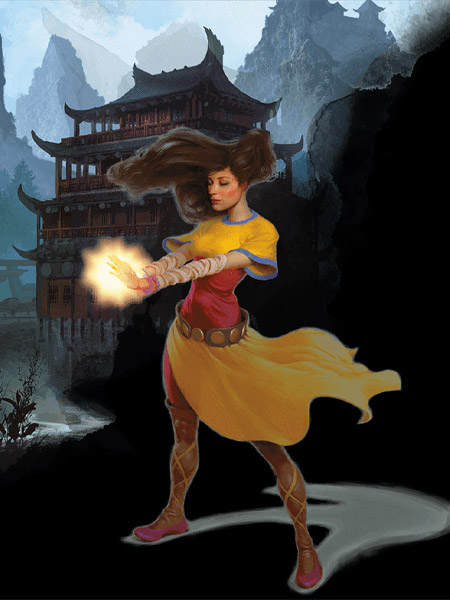
Monks trained by the Open Hand are the ultimate masters in both armed and unarmed martial arts combat. Growing up, they’ve learned techniques that allow them to push and trip their opponents, manipulate ki to heal the damage they take and practise advanced meditation that protects them from every harm.
I. Open Hand Technique
When you choose a monastic tradition at level 3, you can manipulate your enemy’s ki while harnessing your own. Every time you hit a creature with a flurry of blows, you get to impart any one of the following effects on your target
- To dodge the effect, the creature must perform a successful Dexterity saving throw or risk being knocked out
- Similarly, it can also perform a Strength saving throw. But if the throw fails, you can push him 15 feet away from you
- The creature cannot take any reactions until his next turn
II. Wholeness Of The Body
When your DnD monk 5e cross level 6, he has now learned the ability to completely heal himself. When you perform a healing action, you automatically gain hit points thrice at your monk level. Note that you need to take a 30-minute rest before you use this feature again.
III. Tranquillity
As you reach level 11, you enter a special meditation sequence that surrounds you with an aura of peace. Once you complete your meditation sequence, you gain the effect of the Sanctuary Spell that will last until the start of your next rest (meditation sequence).
IV. Quivering Palm
When your character reaches level 17, it can set up lethal vibrations in his opponent’s body. Every time you hit a creature with an unarmed strike, you spend 3 ki points to bring these vibrations into effect. Note that this vibrating effect will last for the number of days equal to your level. For example, if you are at level 5, then the effect will last for 5 days.
These vibrations are harmless, to begin with. You need to perform an action to end them. Note that when performing the Action, you and the target need to be on the same plane of existence. To dodge this effect, the target/creature must make a Constitution saving throw. A failed save sees the hit points reduced to 0. However, a successful save will impart 10d10 necrotic damage on the creature.
NOTE: You can only impart vibrations into only one creature at a time. You can opt to end these vibrations harmlessly without using an action
3. Way of the Drunken Master
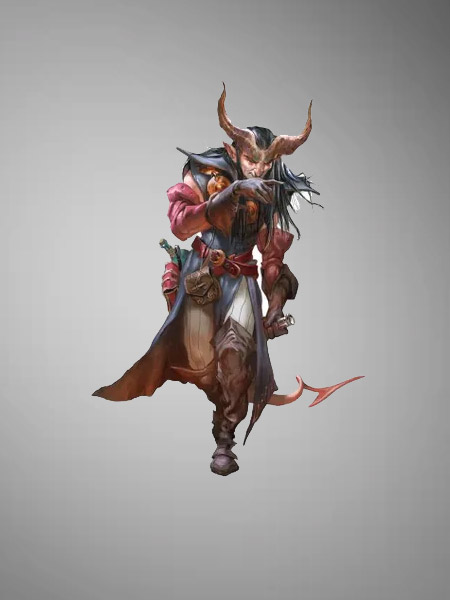
- 3rd Level: Bonus Proficiencies- Performance skill + brewer’s supplies (if you do not already have them)
- 3rd Level: Drunken Technique- Use Flurry of Blows and gain Disengage action + walking speed increase by 10 feet (till the end of the turn)
- 6th Level: Tipsy Sway- Stand up using 5 feet of movement + if a creature misses you with a melee attack, spend 1 ki point to hit another creature with that attack within 5 feet of you that is not you or the attacker (only if you are prone)
- 11th Level: Drunkard’s Luck- Spend 2 ki points and cancel disadvantage on an attack roll, ability check, and saving throw that you make.
- 17th Level: Intoxicated Frenzy- A total of five attacks are allowed with your flurry of blows (each attack must target a different creature)
The archetype of the drunken master makes ample use of their surroundings and employs deception to overwhelm them. This subclass, however, is simply good if you are trying not to get hit. This doesn’t quite bring a lot onto the table, barring a few defenses that can be useful at times. The abilities granted by this subclass are extremely conditional, making it comparatively less powerful.
The drunken technique will prove useful only when you have to move around the battlefield rapidly, and tipsy sway only triggers when you are directly in the fray. Drunkard’s luck needs you to have a disadvantage and gives you the advantage to achieve the same effect, if not some more. The capstone ability is undoubtedly the most useful one, and even that feels like it would be an 11th-level ability. All in all, this can be used to make a good Monk, but you will require just the right feats and a strategic mind to make it work.
4. Way of the Four Elements
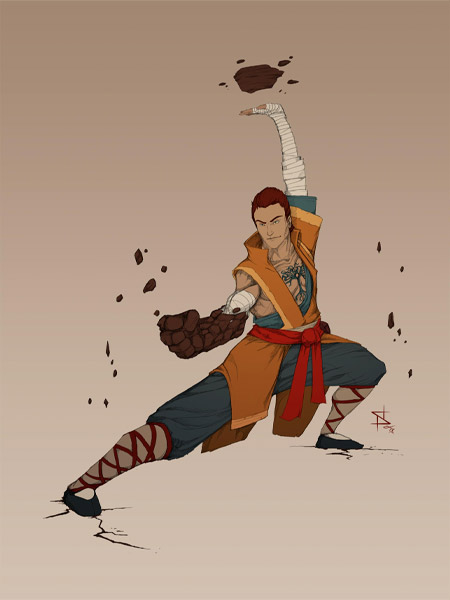
- 3rd, 6th, 11th, and 17th Levels: Gain an elemental discipline from the expansive list of available disciplines.
There are 17 different options available here, with 8 of those available right away at level 3 and the rest with some sort of level-based preconditions. Out of the elemental disciplines, most give the Monk the ability to cast a particular spell with an elemental theme, for instance, Gust of Wind and Fireball.
You will have a few abilities that are not necessarily spells, and they can be quite interesting, unique, and interesting, such as punch-triggered fire damage.
Barring the aforementioned, there really isn’t much that this subclass offers. This subclass essentially forces Monks to funnel a massive number of ki points into spells, in turn depriving them of other feats. The only way this could be redeemable is if it were more like the Battlemaster fighter with the possibility of using some abilities supplemented by normal subclass features.
5. Way of the Kensei
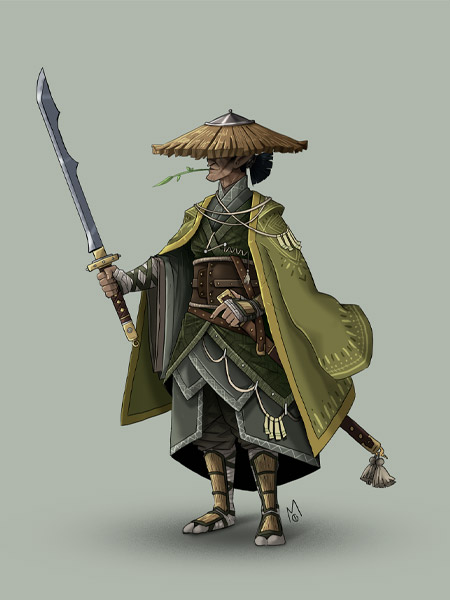
- 3rd Level: Path of the Kensei- Gain 2 martial weapons as monk weapons + increase AC by 2 (till the next turn starts) by making an unarmed strike while holding a kensei ammunition + make the next ranged kensei attack deal a 1d4 as a bonus action + calligrapher’s or painter’s supplies proficiency
- 6th Level: One with the Blade- Kensei weapons deemed as magical + spend 1 ki point to deal added damage equal to your martial arts die after you hit with a kensei weapon
- 11th Level: Sharpen the Blade- Spend up to 3 ki points as bonus actions to provide a kensei weapon a 1-minute bonus to attack and damage rolls equal to the number of ki points spent
- 17th Level: Unerring Accuracy- Once every turn, reroll an attack you miss with 1 of your kensei weapons
Here’s a catch with this subclass- the entire point of this archetype of the monk is that they are better at using weapons and hence, get access to martial weapons. The restrictions on kensei weapons prevent you from accessing many of the best martial weapons. Moreover, Tasha’s Cauldron of Everything introduced the dedicated weapon feature that lets any monk choose a similarly restricted martial weapon.
Once you overlook that gripe, this subclass can be used to your advantage. The abilities offered by the features and the synergy with the base monk class put us in a great position to dominate any battlefield. Lastly, the 6th and 11th level features might feel a little wasted if you already have a magical weapon as your kensei weapon, so be on the lookout for that.
6. Way of the Long Death
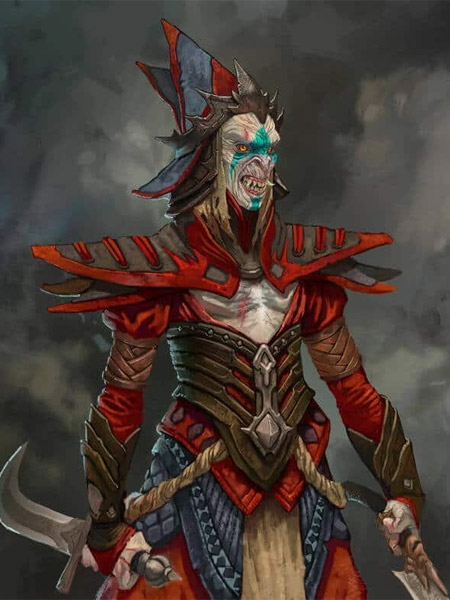
- 3rd Level: Touch of Death- Reduce a creature within 5 feet of you to 0 HP, and gain temporary HP equal to your wisdom modifier + your Monk level.
- 6th Level: Hour of Reaping- Force creatures within 30 feet of you as an action to make a Wisdom saving throw or make them frightened of you till the end of the next turn
- 11th Level: Mastery of Death- Spend 1 ki point to drop to 1 HP instead of 0
- 17th Level: Touch of the Long Death- Spend 1 to 10 ki points and force a creature into making a Constitution saving throw. They take 2d10 necrotic damage on a failed save, and half on a successful save.
This subclass is, at best, a collection of barely-related mediocre abilities. Touch of the long death costs half of your resources to deal serious damage and is by far the worst one of the lot. It offers a few abilities that increase your durability in very specific situations, along with an ability that pushes creatures away from you.
Monks would want creatures to be next to them and allow them to use as many actions as possible to deal hefty damage. Putting the Hour of Reaping on a bonus action could have slightly improved this build, but not completely. However, it doesn’t take anything away from the Monk class or make it harder to play.
7. Way of Mercy
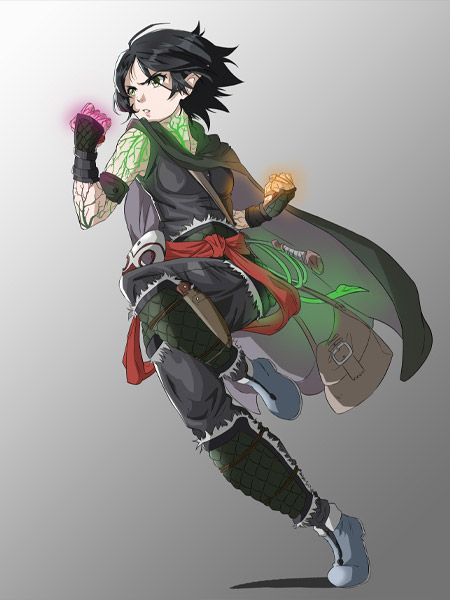
- 3rd Level: Implements of Mercy- Insight and Medicine proficiency + a special mask
- 3rd Level: Hands of Healing- Spend 1 ki point (as an action) to touch a creature and restore HP equal to your martial arts die + wisdom modifier.
- 3rd Level: Hands of Harm- Once every turn, spend 1 ki point when you hit a creature with an unarmed strike to effectively deal additional necrotic damage equal to your martial arts die + wisdom modifier
- 6th Level: Physician’s Touch- End 1 disease or a condition (blinded/ deafened/ paralyzed/ poisoned/ stunned) when you use Hands of Healing. Use Hands of Harm to poison a creature till the end of the next turn.
- 11th Level: Flurry of Healing and Harm- Replace each hit of a Flurry of Blows with Hands of Healing. Make a Hands of Harm attack as part of Flurry of Blows without spending a ki point.
- 17th Level: Hands of Ultimate Mercy- Once every long rest, revive a creature that has been dead for no longer than 24 hours by spending 5 HP. Creatures brought back to life in this way regain 4d10 + wisdom modifier HP and are cured of any condition mentioned in the physician’s touch.
The Way of Mercy Monk excels at walking the fine line between life-death and healing-harm. It feeds off of the Monk’s unarmed strikes right from the 3rd level with a little inclusion for Flurry of Blows. The rest of the features continue improving both Hands of Harm and Hands of Healing.
Usually, a subclass splits up these abilities as options or makes them more limited in some way. Here we see a subclass that gets continuous use out of their abilities, given they can conserve the ki points. With it being only 1 ki point for these abilities (or free if you tack it onto a flurry of blows), that isn’t hard to do.
8. Way of the Shadow
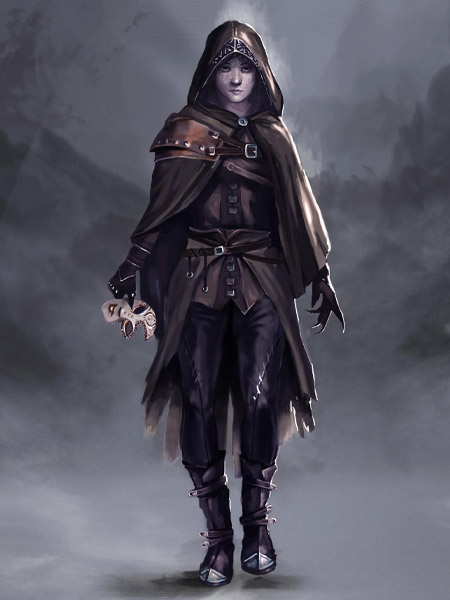
- 3rd Level: Shadow Arts- Gain the ability to cast Darkness, Darkvision, and Pass without Trace or Silence by expending 2 ki points + learn the Minor Illusion cantrip
- 6th Level: Shadow Step- Teleport up to 60 feet (as a bonus action) between two spaces in dim light or darkness. Gain advantage on the 1st melee attack you make before the end of every turn.
- 11th Level: Cloak of Shadows- Use your action to become invisible when you are in dim light or darkness. It ends when you make an attack, enter bright light, or cast a spell.
- 17th Level: Opportunist- Make a melee attack reaction against any creature within 5 feet of you which is hit with an attack by a different creature
This subclass focuses on the stealth and movement of the Monk class. It uses the shadow motif to employ a few impressive tactical abilities. There’s a ton of synergy between the first 2 abilities: being able to create darkness + jump from one area of darkness to another allows for a lot of mobility.
Throw in all stealth abilities, such as Pass without Trace and Cloak of Shadows, and you have in your hands a Monk who is using their dexterity in much the same way that a rogue might. This subclass falls short as it seems to forget that it’s, in fact, on a Monk, a class that is already the most mobile martial combatant out there. It could benefit from more offensive abilities that are not purely focused on battlefield superiority.
9. Way of the Sun Soul
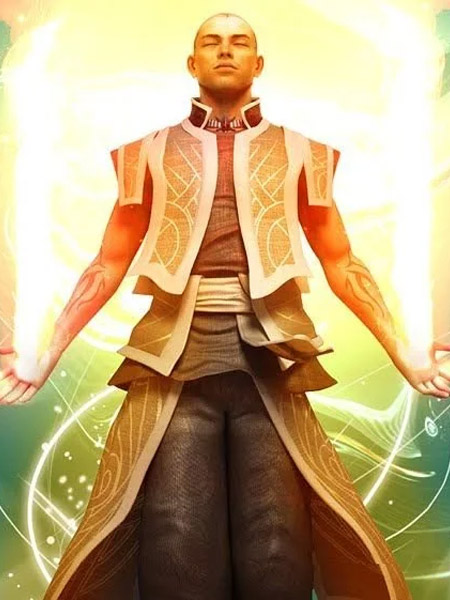
- 3rd Level: Radiant Sun Bolt- Gain a 30-foot ranged spell attack + add dexterity modifier to attack and damage rolls. The attack deals radiant damage equal to the martial arts die.
- 6th Level: Searing Arc Strike- Cast Burning Hands for 2 ki points + upcast it for 1 ki point each level, with a maximum casting level of half of your monk level.
- 11th Level: Searing Sunburst- Hurl an orb of light up to 150 feet away (as an action) where it explodes, dealing 2d6 radiant damage to every creature in a 20-foot sphere that fails a Constitution save. Deal extra damage by expending up to 3 ki points (2d6 damage for each ki point spent)
- 17th Level: Sun Shield- Shed bright light, dealing 5 + wisdom modifier damage as a reaction to each creature that hits you with melee attacks.
This subclass falls short of the archetype it’s trying to bring to life. The 3rd level feature gives us nothing much since a Monk excels at close range and can already deal that damage with their Monk weapons or unarmed strikes (not to mention the Monk’s mobility). Burning Hands deals good damage, but the flurry of blows can deal more shortly after the martial arts die gets a little stronger, and upcasting it takes too much of your resources.
This subclass simply isn’t cohesive, bringing a mediocre new attack and 2 attack abilities that vie for ki points. It needs an ability to reinforce the Monk’s melee capabilities instead of trying to create a ranged Monk, giving no real incentive to do so.
Best Race for Monk 5E
Each new D&D character requires a solid base, which is the choice of which race they will be. Out of all the standard 5th Edition races, Hill Dwarves, Wood Elves, Stout Halflings, and Variant Humans are some of the best Monk races, based on their bonuses and racial features.
Here’s a look at a few of them:
- Wood Elves: The perfect bonuses corresponding to the Monk’s ability stat needs; a +2 Dexterity and +1 Wisdom with increased movement speed. Moreover, the basic features of an Elf come in handy for Monks. The wood elf-specific Mask of the Wild is great as well.
- Stout Halflings: Decent ability stat bonuses and the racial feats, Lucky and Brave. The lowered movement speed is not quite ideal, but it can be fixed later on.
- Hill Dwarves: Gain +2 Constitution. If you roll a high enough number to assign to Dexterity (at least a 16), Constitution is still an essential thing to have, and the Dwarves’ +1 Wisdom is always good as well.
- Variant Humans: You might as well make any class list as they are the perfect moldable race; you can choose which abilities to grant bonuses to. Feel free to go for an insanely useful level 1 feat.
- Aarakocra: Looking for something outside the main D&D sourcebook? Check out Aarakocra, the avian-hybrid race with bonuses to Dexterity, Wisdom, and flying speed. With these, it is unbelievable how good a Monk and Aarakocra would be.
- Kenku: It is available in Volo’s Guide To Monsters. The mysterious Kenku has become a popular choice, courtesy in part to the character of Kiri in Critical Role. They will make ideal Rogues and Clerics apart from the best Monks.
Monk Multiclassing
Monks and Rangers can be a surprisingly good combo since they both need Dexterity and Wisdom to function. With the Ranger’s better hit dice, Monks can make up for lost HP. Rangers also get you access to fighting styles, with duelist being a choice here. Get the Hunter’s Mark spell which deals 1d6 extra damage any time someone is hit with a weapon attack. Throw in an extra attack and a flurry of blows, and you have a single round of Hunter’s Mark dealing up to 4d6 extra damage. What’s more, that’s before including any other static bonus damage you might get. Try out Gloom Stalker or Hunter for more potent bursts of damage dealt.
Kensei plays especially well with the Ranger, but that’s true for any Monk subclass. Four levels will get you lots of features along with all the important ability score increases. Rogues and Monks make for an incredibly versatile combo. Simply 2 levels of Rogue offer expertise with some of the skills your player probably wanted to pick up anyway. Get Sneak Attack and, most importantly, Cunning Action with a lot of overlap with the Monk’s suite of bonus action abilities. It will save you a lot of Ki points in the long run. Go even further, and you can pick up a subclass as well, such as the Thief, Swashbuckler, or Arcane Trickster. The latter has the potential to give you some magical options that won’t require a 13 Intelligence or Charisma. Therefore, it is easily one of the best ways for a Monk to access the Shield spell.
Monks get a lot out of Divine Favor, and even a single level gets them Domain abilities. You must grab extra attack as the Monk as quickly as you can to avail this, though. Way of the Shadow is by far the most classic Monk pairing, but it’s important to note that most work well with a Rogue. Clerics and Monks are perhaps the most powerful magical combo. You will need Dexterity and Wisdom as a Monk, and Cleric would also want a high Wisdom. So, add some extra spellcasting into the mix.
Conclusion
While there are tonnes of other characters to choose from in DnD 5e, monks provide you with the most unique playstyle. In addition, you get to choose your own backstory to go with your character. If you are looking for the DnD 5e best monk build, ensure that you go through every single inch of this article.






